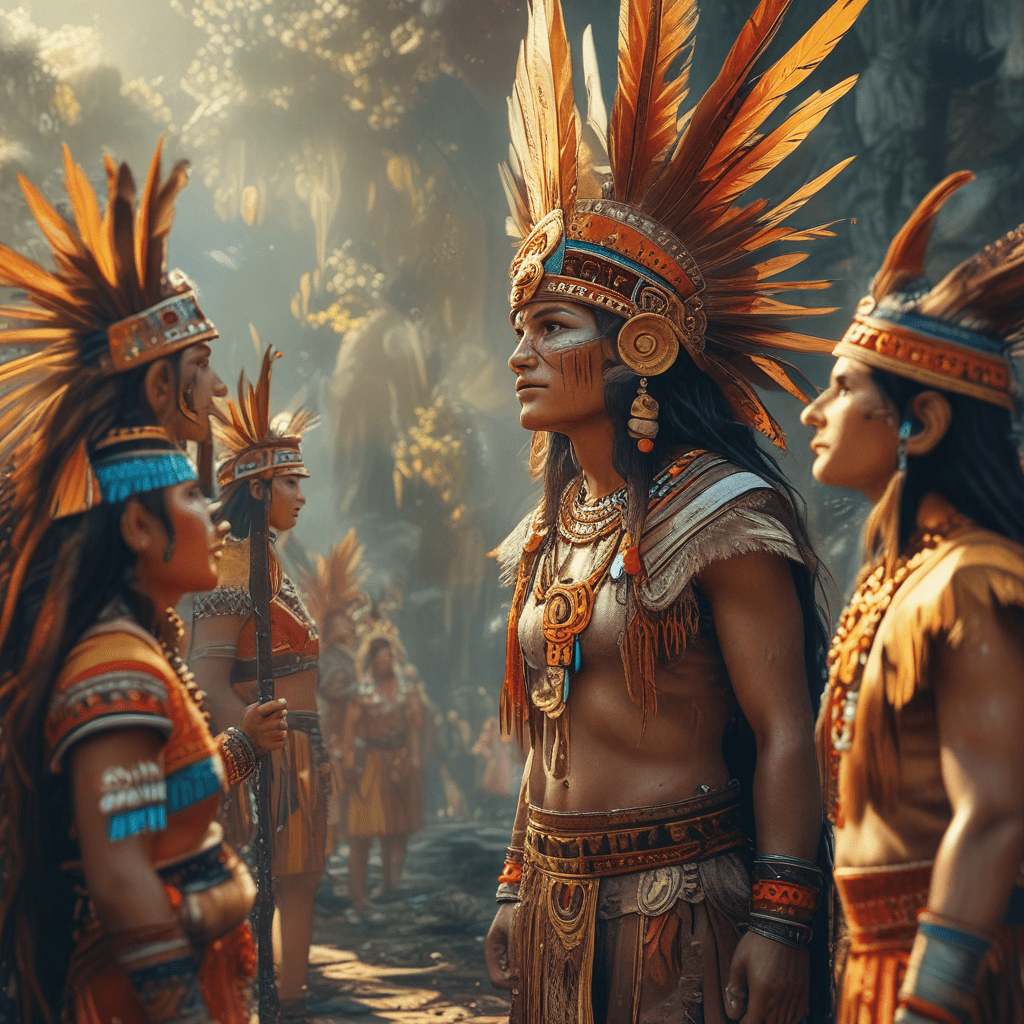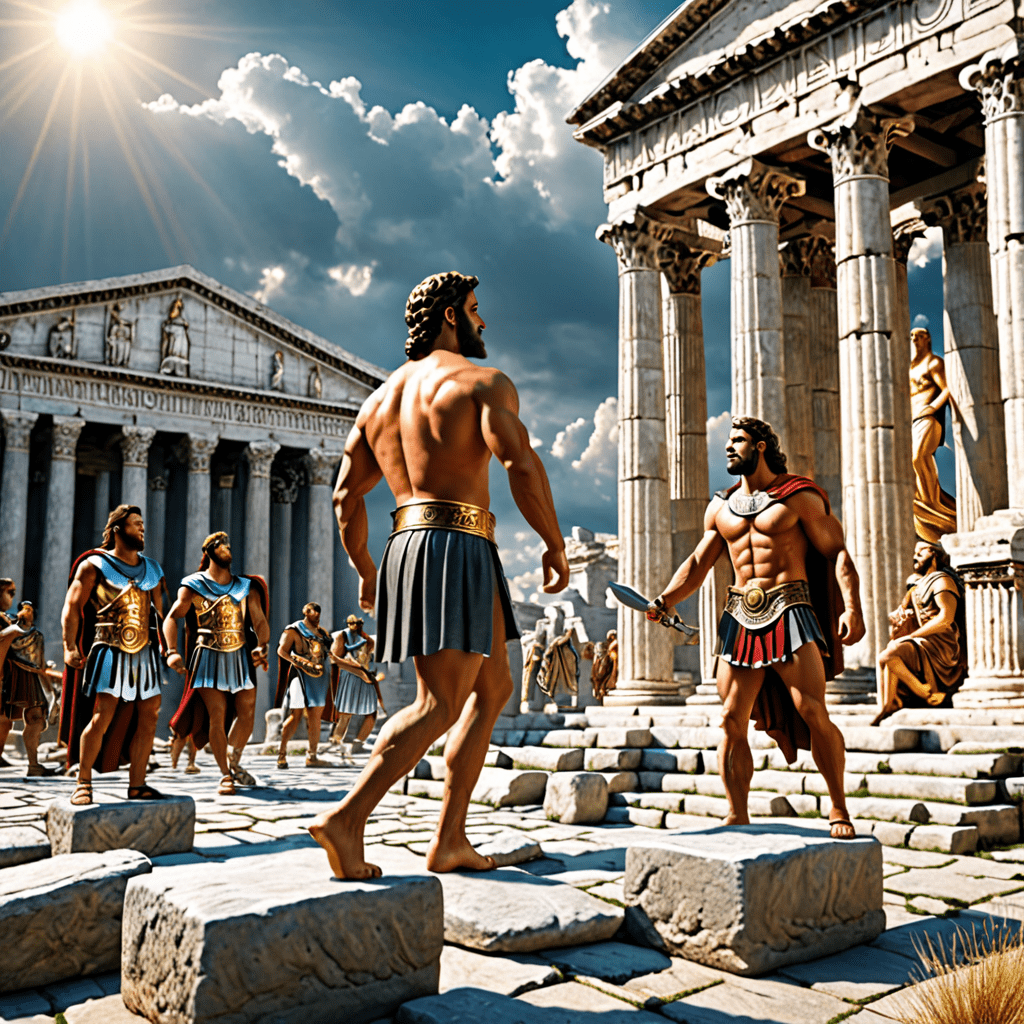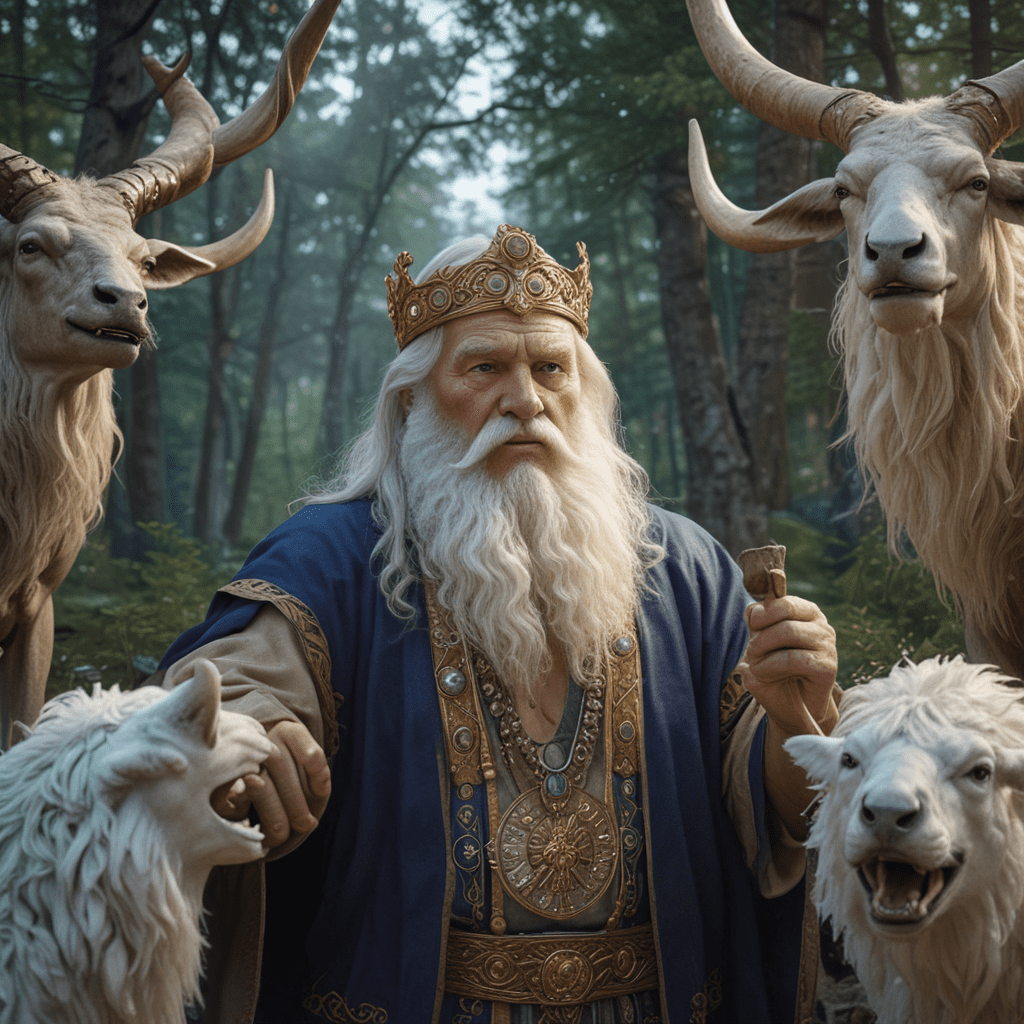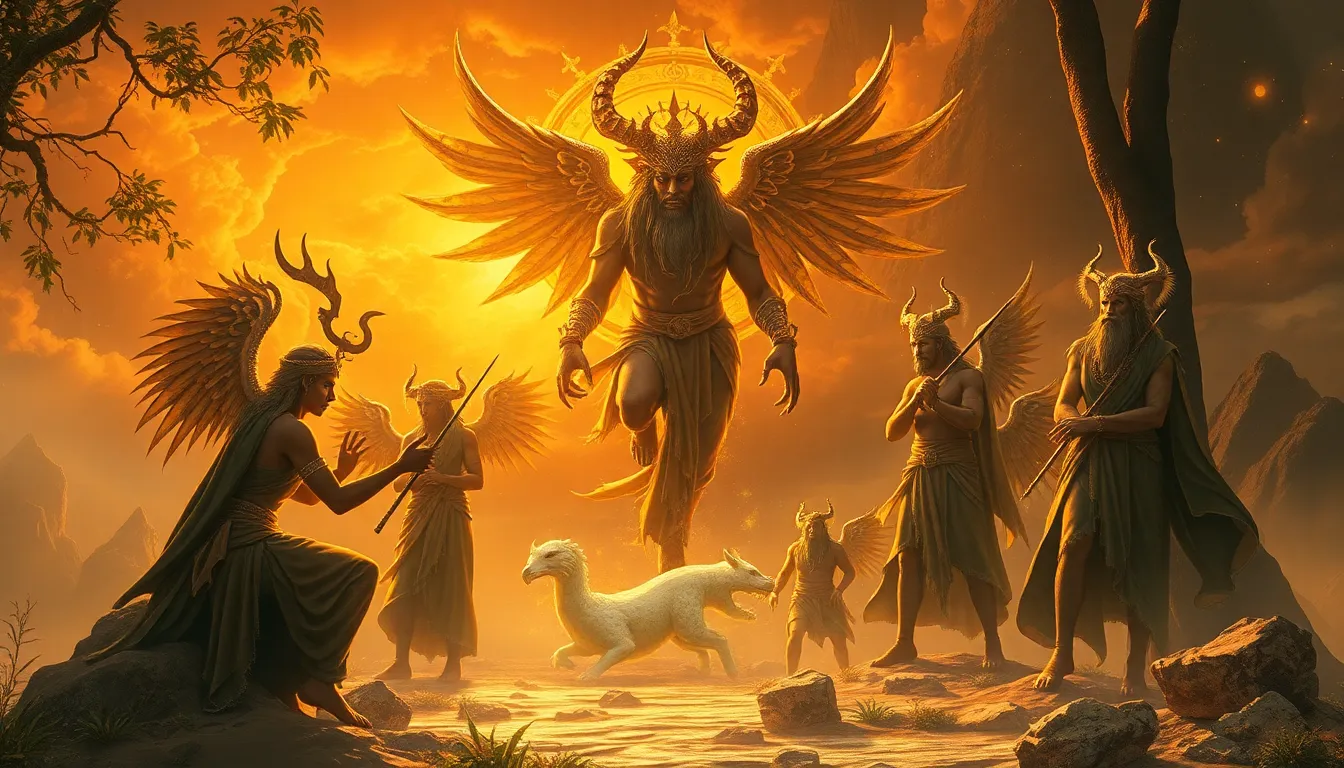Incan Mythical Festivals: Celebrating Gods and Ancestors
1. The Cosmic Order: Incan Beliefs and the Divine Realm
The Incan civilization, which flourished in the Andes Mountains of South America from the 13th to the 16th century, possessed a rich and complex mythology that deeply influenced their lives. The Incas viewed the world as a meticulously ordered cosmos, governed by a panoply of deities. They believed that the universe was structured in three realms: the upper world (Hanan Pacha), the middle world (Kay Pacha), and the underworld (Ukhu Pacha). Each realm was inhabited by specific deities, and the Incas believed that maintaining harmony between these realms was crucial for the well-being of their civilization.
2. The Sun, Moon, and Stars: Celestial Deities in Incan Mythology
The Incas revered the celestial bodies, seeing them as powerful deities that influenced their lives and the natural world. The sun, represented by the god Inti, was considered the most important deity, providing life-giving warmth and light. The moon, known as Mama Killa, was associated with fertility and the cycles of nature. The stars were also seen as celestial beings, each with its own unique power and influence. The Incas believed that the stars guided their ancestors and influenced their destinies.
3. Pachamama: The Earth Mother and Her Role in Incan Festivals
Pachamama, the Earth Mother, was another central figure in Incan mythology. She represented the fertile land, providing sustenance and abundance. The Incas deeply respected Pachamama and believed that she had the power to both bless and punish them. They offered prayers, sacrifices, and gifts to appease her and ensure a bountiful harvest. Many Incan festivals were dedicated to Pachamama, emphasizing the crucial connection between the human world and the natural world.
4. The Inti Raymi: Celebrating the Sun God and the Harvest
The Inti Raymi, also known as the Festival of the Sun, was the most significant festival in the Incan calendar. It was held in June to celebrate the winter solstice, marking the return of the sun and the promise of a new harvest. During this grand celebration, the Incas gathered in the sacred plaza of Cusco, the Incan capital, to perform elaborate rituals and offer sacrifices to the sun god, Inti. The Inti Raymi was a time of joy, feasting, and celebration, but it also held great religious significance.
5. Coya Raymi: Honoring the Moon Goddess and Fertility
The Coya Raymi, also known as the Festival of the Moon, was another prominent festival in the Incan calendar. It was dedicated to Mama Killa, the Moon Goddess, and celebrated her role in regulating the cycles of nature and influencing fertility. The Coya Raymi was usually held in August, coinciding with the full moon. During this festival, the Incas offered sacrifices to Mama Killa, prayed for bountiful harvests, and celebrated the power of the moon in their lives.
Incan Mythical Festivals: Celebrating Gods and Ancestors
1. The Cosmic Order: Incan Beliefs and the Divine Realm
The Incan civilization, which flourished in the Andes Mountains of South America from the 13th to the 16th century, possessed a rich and complex mythology that deeply influenced their lives. The Incas viewed the world as a meticulously ordered cosmos, governed by a panoply of deities. They believed that the universe was structured in three realms: the upper world (Hanan Pacha), the middle world (Kay Pacha), and the underworld (Ukhu Pacha). Each realm was inhabited by specific deities, and the Incas believed that maintaining harmony between these realms was crucial for the well-being of their civilization.
2. The Sun, Moon, and Stars: Celestial Deities in Incan Mythology
The Incas revered the celestial bodies, seeing them as powerful deities that influenced their lives and the natural world. The sun, represented by the god Inti, was considered the most important deity, providing life-giving warmth and light. The moon, known as Mama Killa, was associated with fertility and the cycles of nature. The stars were also seen as celestial beings, each with its own unique power and influence. The Incas believed that the stars guided their ancestors and influenced their destinies.
3. Pachamama: The Earth Mother and Her Role in Incan Festivals
Pachamama, the Earth Mother, was another central figure in Incan mythology. She represented the fertile land, providing sustenance and abundance. The Incas deeply respected Pachamama and believed that she had the power to both bless and punish them. They offered prayers, sacrifices, and gifts to appease her and ensure a bountiful harvest. Many Incan festivals were dedicated to Pachamama, emphasizing the crucial connection between the human world and the natural world.
4. The Inti Raymi: Celebrating the Sun God and the Harvest
The Inti Raymi, also known as the Festival of the Sun, was the most significant festival in the Incan calendar. It was held in June to celebrate the winter solstice, marking the return of the sun and the promise of a new harvest. During this grand celebration, the Incas gathered in the sacred plaza of Cusco, the Incan capital, to perform elaborate rituals and offer sacrifices to the sun god, Inti. The Inti Raymi was a time of joy, feasting, and celebration, but it also held great religious significance.
5. Coya Raymi: Honoring the Moon Goddess and Fertility
The Coya Raymi, also known as the Festival of the Moon, was another prominent festival in the Incan calendar. It was dedicated to Mama Killa, the Moon Goddess, and celebrated her role in regulating the cycles of nature and influencing fertility. The Coya Raymi was usually held in August, coinciding with the full moon. During this festival, the Incas offered sacrifices to Mama Killa, prayed for bountiful harvests, and celebrated the power of the moon in their lives.
6. The Significance of Ancestor Worship in Incan Festivals
Ancestor worship was an integral part of Incan culture and deeply intertwined with their festivals. The Incas believed that their ancestors' spirits continued to exist in the afterlife and held immense power to influence their lives. They honored their ancestors through various rituals, offerings, and ceremonies, seeking their guidance and protection. Many festivals included specific rituals dedicated to ancestor worship, showcasing the importance of maintaining a strong connection with the past.
7. Offerings and Rituals: Communicating with the Divine and Ancestors
The Incas communicated with their deities and ancestors through elaborate rituals and offerings. They believed that these acts of reverence would appease the gods and ensure their favor. Offerings included food, drink, precious metals, and even human sacrifices in some instances. Rituals were often highly symbolic, involving music, dance, and specific gestures intended to convey respect and devotion.
8. The Role of Festivals in Maintaining Social Harmony and Order
Incan festivals played a significant role in maintaining social harmony and order within their society. They reinforced the importance of collective responsibility, loyalty to the Inca emperor, and respect for the divine. By uniting people in common purpose and celebration, the festivals helped to create a sense of community and belonging. They also served as a way to legitimize the Inca emperor's rule and reinforce the sacred nature of their social hierarchy.
9. Theories on the Origins and Evolution of Incan Festivals
The origins and development of Incan festivals are complex and still under debate by scholars. Some believe that the festivals evolved from earlier indigenous traditions, while others suggest that they were influenced by contact with other civilizations. Regardless of their exact origins, Incan festivals clearly reflected the unique beliefs and values of the civilization, showcasing their deep connection to the natural world, their reverence for the divine, and their strong emphasis on social unity.
10. The Legacy of Incan Festivals: Modern Celebrations and Cultural Preservation
Despite the conquest of the Inca Empire by the Spanish in the 16th century, the legacy of Incan festivals continues to resonate in modern times. While some traditional festivals were suppressed under Spanish rule, many have been revived and adapted in recent years. Modern celebrations often blend elements of traditional Incan practices with contemporary influences, providing a fascinating glimpse into the enduring power of Incan mythology and culture. Through the continued practice of these festivals, the Incan people honor their ancestors and strive to preserve the unique heritage that distinguishes their culture.
FAQ
Q: What were some of the most important Incan festivals?
A: The most significant festivals included the Inti Raymi (Festival of the Sun), the Coya Raymi (Festival of the Moon), and the Capac Raymi (Festival of the Inca Emperor).
Q: What types of offerings did the Incas make to their gods and ancestors?
A: Offerings varied depending on the specific deity or ancestor being honored. Common offerings included food, drink, precious metals, textiles, and in some cases, human sacrifices.
Q: How did Incan festivals contribute to social harmony?
A: Festivals brought people together, reinforced collective responsibility, fostered loyalty to the Inca emperor, and demonstrated respect for the divine.
Q: What are some examples of modern celebrations that draw upon Incan traditions?
A: Many communities in the Andes region continue to celebrate traditional Incan festivals such as the Inti Raymi and the Coya Raymi. There are also modern events that draw inspiration from Incan mythology and culture.




